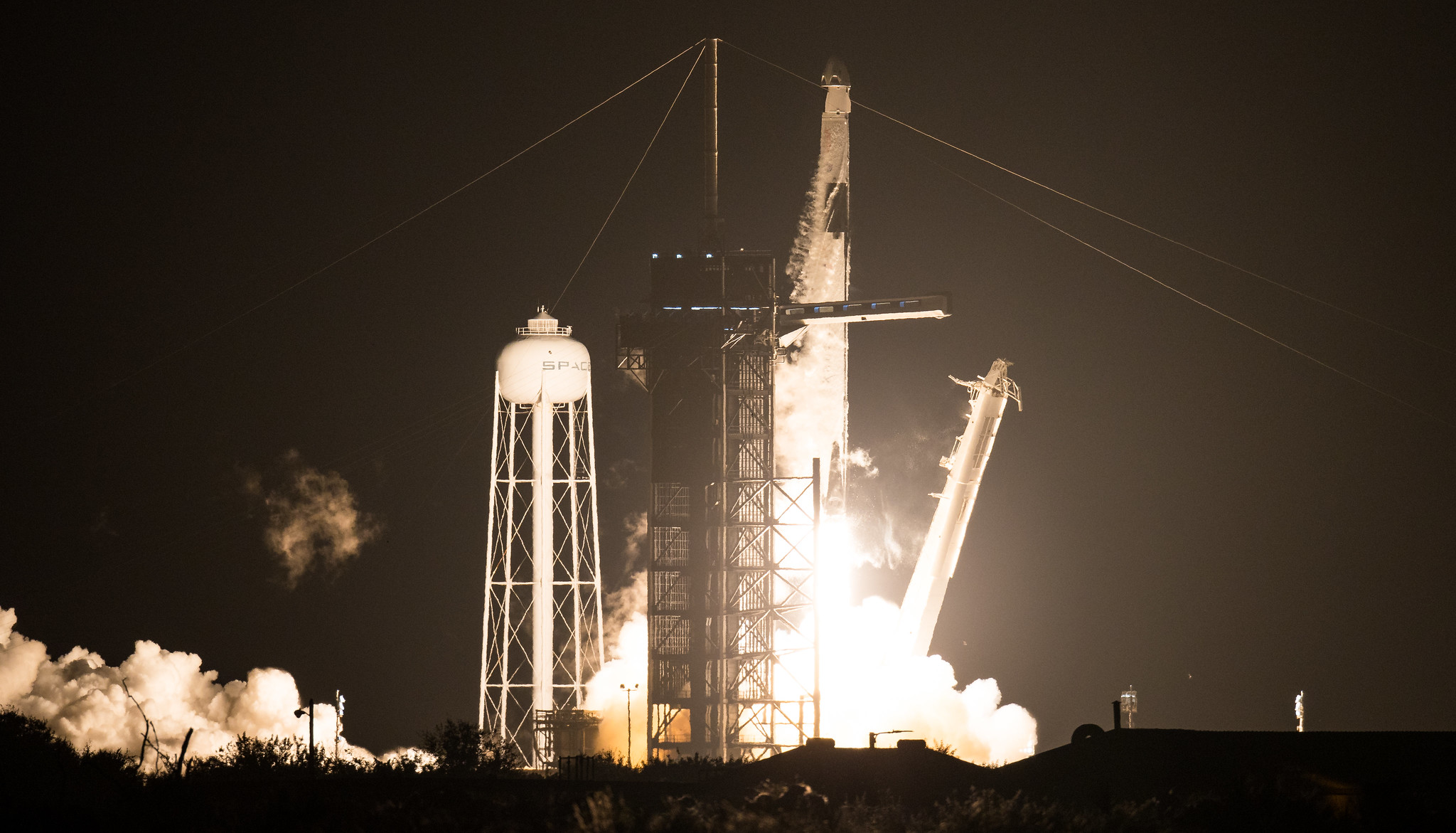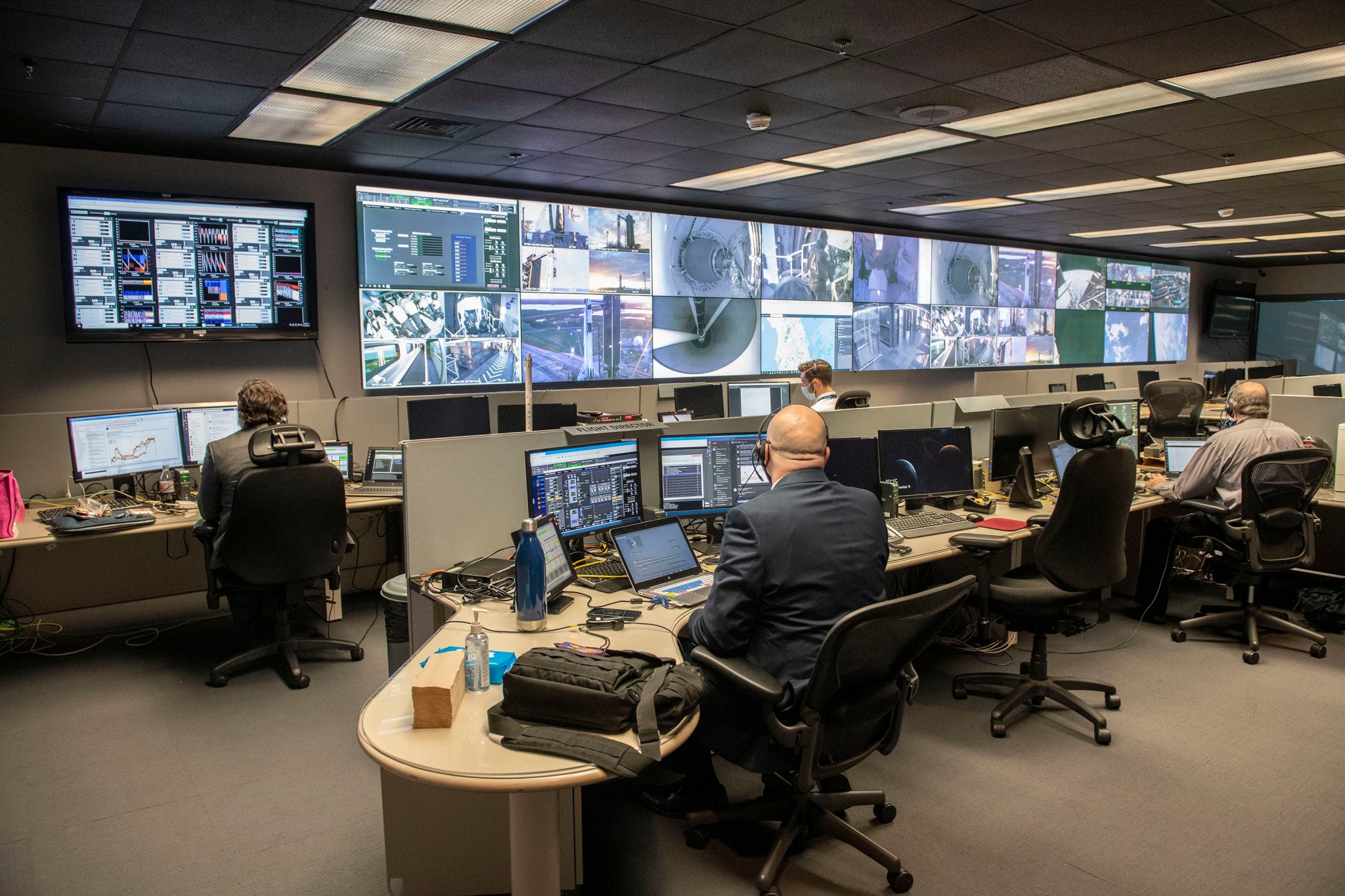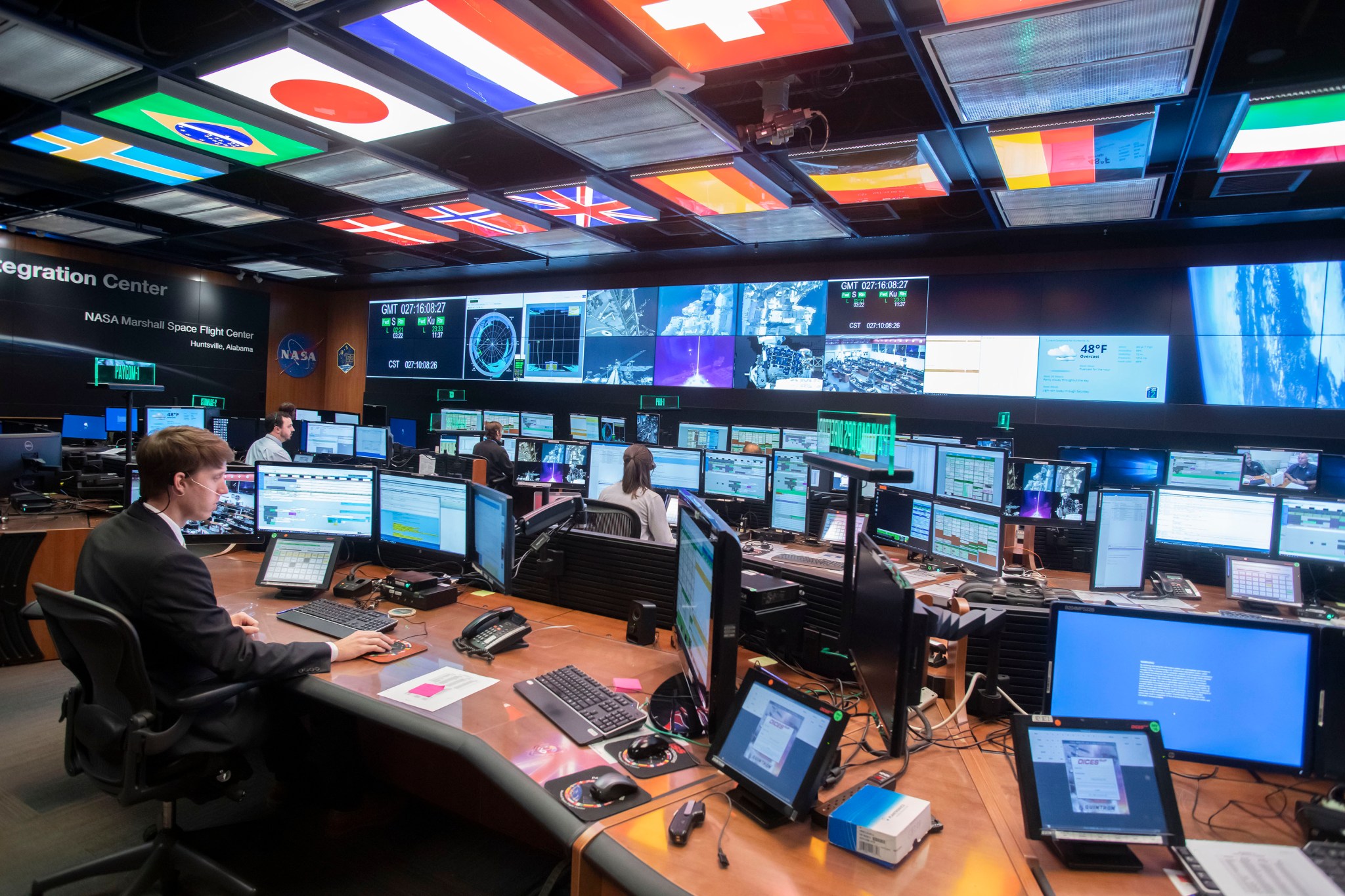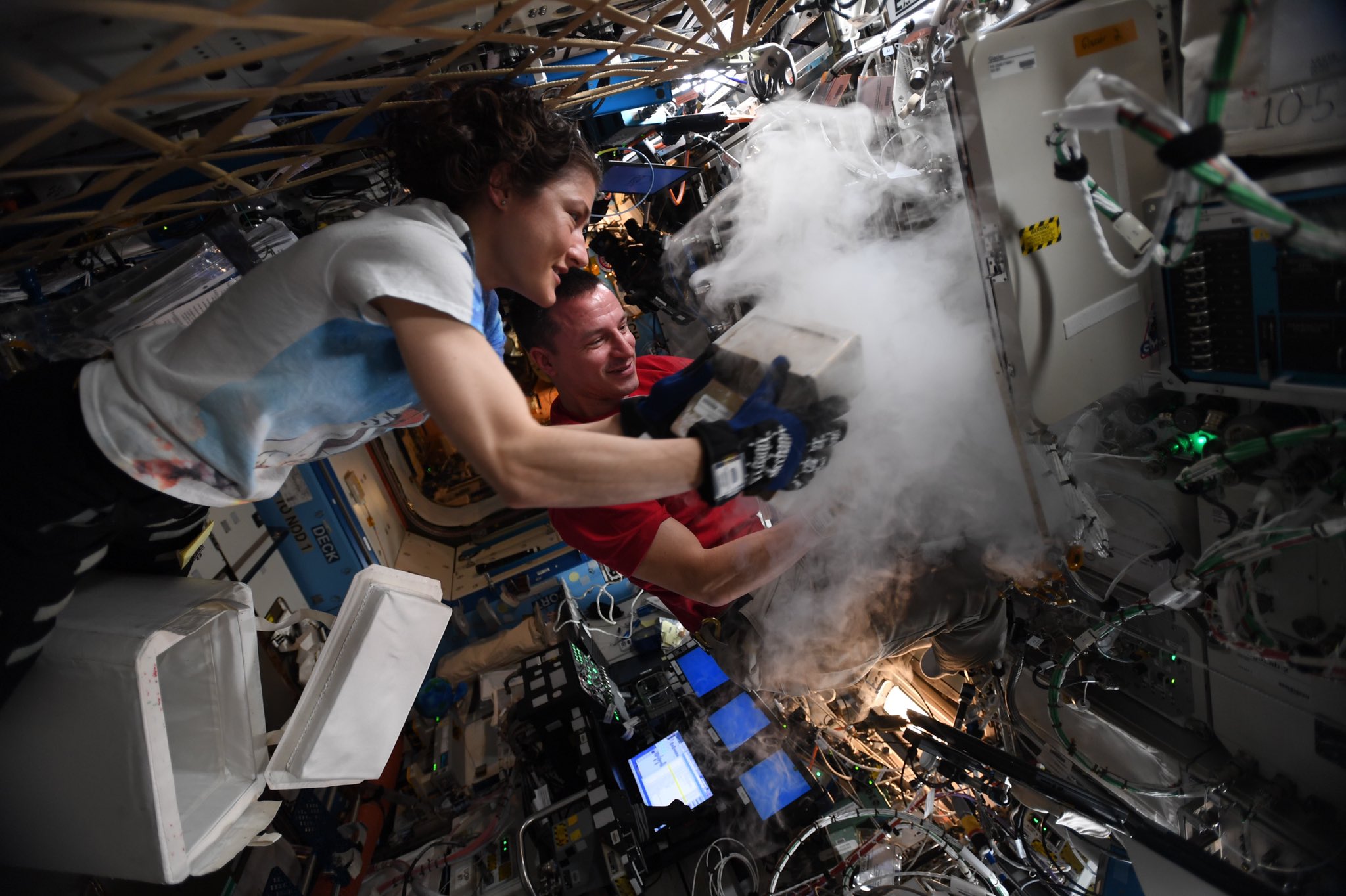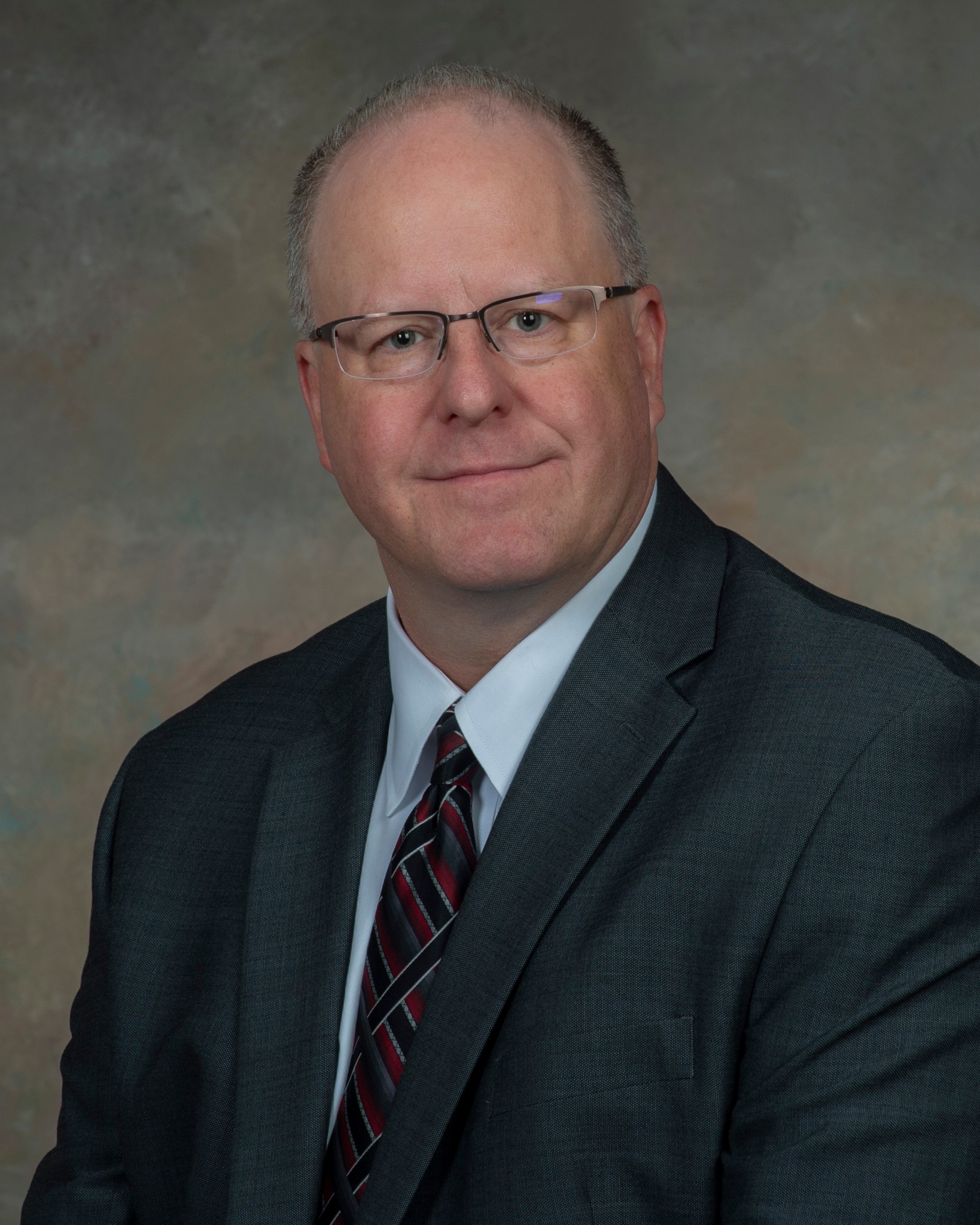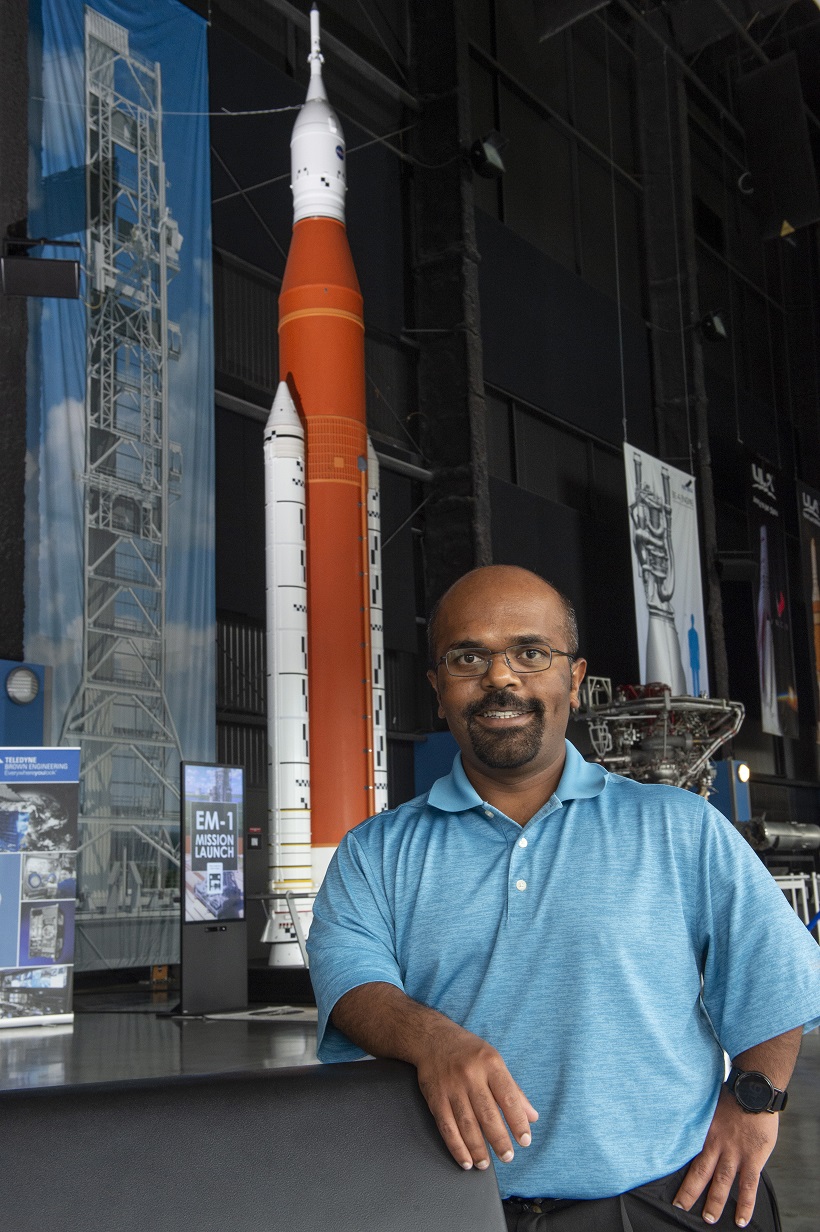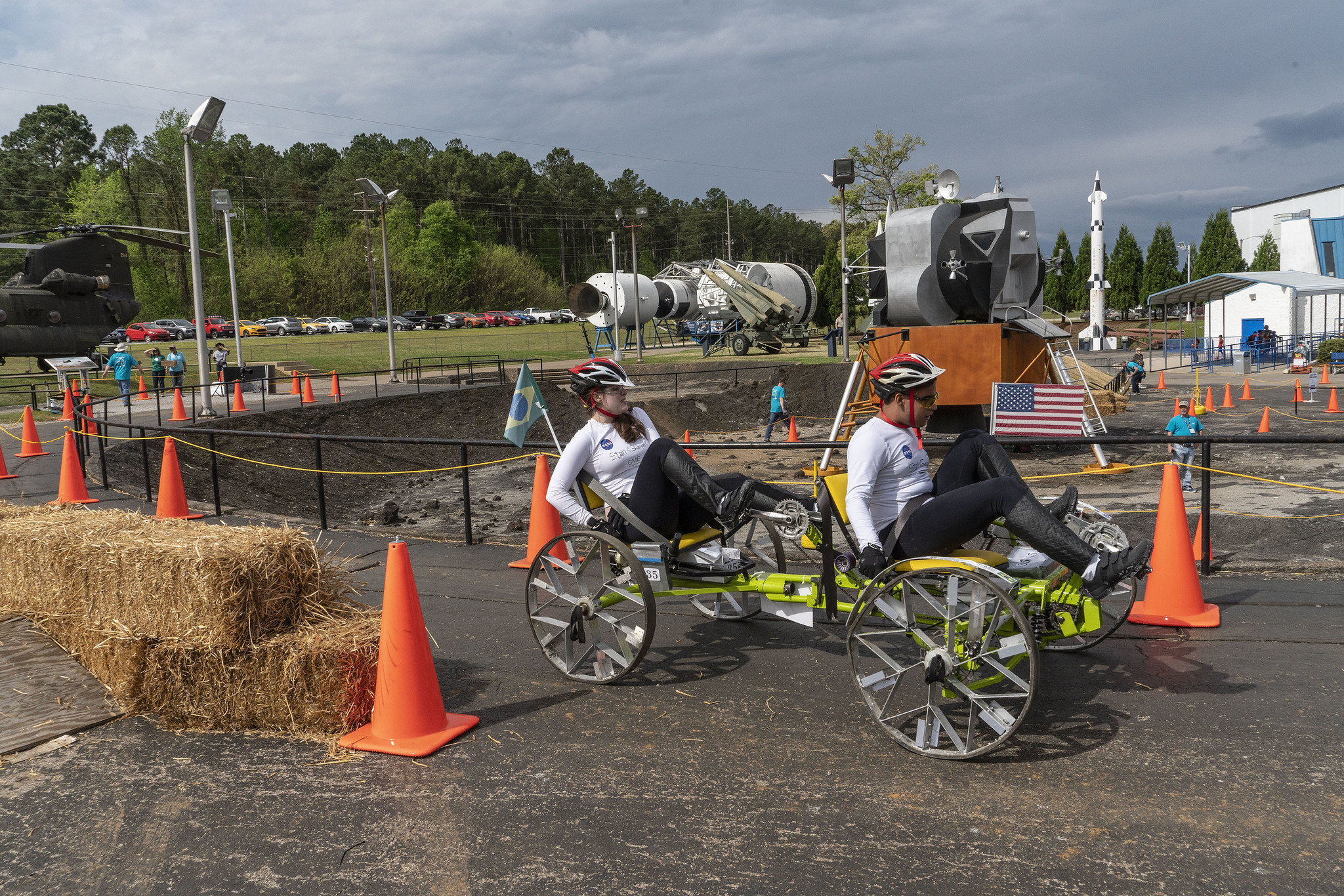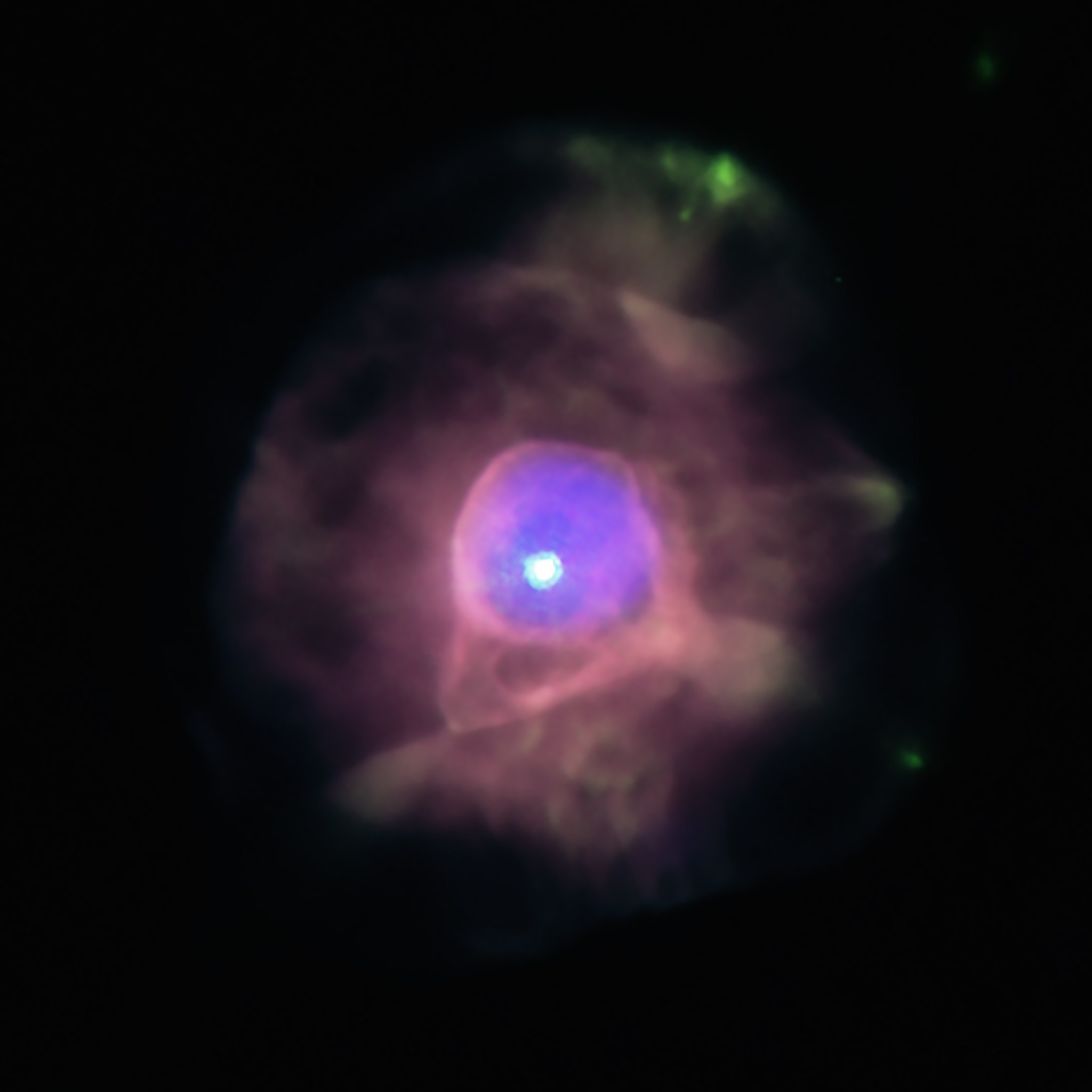In This Week’s Star
- NASA’s SpaceX Crew-1 Astronauts Arrive at International Space Station
- Marshall Team Enables Increased Science Return from Space Station Astronauts
- Take 5 with Jason Detko
- Harsha Rayapati Refused to Let Genetic Disorder Deter His NASA Dream
- Teams Selected for NASA’s 2021 Human Exploration Rover Challenge
- Chandra Detects a Cosmic Amethyst in a Dying Star
- This Week in NASA History: 3rd Crewed Skylab Mission Launches – Nov. 16, 1973
NASA’s SpaceX Crew-1 Astronauts Arrive at International Space Station
Following the spectacular night launch Nov. 15 and subsequent rendezvous with the International Space Station a little more than a day later, NASA’s SpaceX Crew-1 mission is ready to begin a six-month science mission on the station – and a new chapter in human exploration of space.
The four-person crew successfully launched – aboard the first NASA-certified commercial human spacecraft system in history – at 6:27 p.m. CST from Launch Complex 39A at NASA’s Kennedy Space Center. The Crew Dragon spacecraft “Resilience,” carrying NASA astronauts Michael Hopkins, Victor Glover, and Shannon Walker, and Soichi Noguchi of the Japan Aerospace Exploration Agency, was lofted by a SpaceX Falcon 9 rocket.
Resilience docked autonomously with the space station’s Harmony module at 10:01 p.m. CST Nov. 16. The new crew was welcomed aboard shortly thereafter by the Expedition 64 crew, which includes Commander Sergey Ryzhikov and Flight Engineer Sergey Kud-Sverchkov of the Russian space agency Roscosmos, and Flight Engineer Kate Rubins of NASA.
The expanded Expedition 64 crew will conduct science and station maintenance, and will return to Earth in spring 2021 – marking the longest human space mission yet launched from the United States.
“This is an important mission for NASA, SpaceX, and our partners at JAXA,” NASA Administrator Jim Bridenstine said. “NASA is delivering on its commitment to the American people and our international partners to provide safe, reliable, and cost-effective missions to the International Space Station using American private industry.”
Gwynne Shotwell, president and chief operating officer of SpaceX, concurred. “I could not be more proud of the work we’ve done here,” she said. “Falcon 9 looked great, Dragon was dropped off into a beautiful orbit about 12 minutes into the mission, and we’ll get more data as we go.”
The mood was equally enthusiastic at NASA’s Marshall Space Flight Center, where engineers spent months prior to launch supporting vehicle systems integration and checkout – including exhaustive tests, in partnership with SpaceX, to prepare the Crew Dragon’s mighty Merlin engines for flight.
“It was a beautiful night launch. We are thrilled with the liftoff of Crew-1 and this incredible accomplishment,” said Marshall’s Steve Gaddis, launch vehicle deputy manager for NASA’s Commercial Crew Program. “Our team at Marshall leverages collective knowledge based on decades of launch experience. It is great to be part of the new era of commercial human spaceflight.”
The Crew-1 mission is the first of six crewed missions NASA and SpaceX will fly as part of the Commercial Crew Program. This mission has several firsts, including:
- The first flight of the NASA-certified commercial system designed for crew transportation, which moves the system from development into regular flights;
- The first international crew of four to launch on an American commercial spacecraft;
- The first time the station’s expedition crew size will increase from six to seven crew members, adding to available research time; and
- The first time the Federal Aviation Administration has licensed a human orbital spaceflight launch.
The astronauts named their spacecraft Resilience to highlight the dedication of all contributing teams around the world and to demonstrate the limitlessness of human endeavor when they strive together for common goals.
The successful launch was “a special moment for NASA and our SpaceX team,” said Steve Stich, manager of NASA’s Commercial Crew Program. “I want to thank the teams for the amazing effort to make the next generation of human space transportation possible.”
“It is an honor to have our Japanese astronaut launch on this Crew-1 Dragon,” said Hiroshi Sasaki, JAXA vice president. “We look forward to having him conduct lots of science and demonstrate the technology, for here on Earth and for the future. I would also like to thank NASA and SpaceX for their tremendous effort to make this happen.”
Rubins, Hopkins, Glover, Walker, and Noguchi will participate in a live news conference from orbit at 8:55 a.m. CST on Nov. 19 on NASA TV. Read more about the new expedition crew members and their mission goals here.
NASA’s Commercial Crew Program provides safe, reliable, cost-effective transportation to and from the space station from U.S. soil through a partnership with American private industry – opening access to low-Earth orbit and the space station to more people, more science, and more commercial opportunities.
Marshall Team Enables Increased Science Return from Space Station Astronauts
By Will Bryan
Flying silently through the void of space around a globe of blue and green is the most advanced science laboratory ever developed: the International Space Station. Inside humanity’s orbiting outpost is a buzz of activity as explorers, pilots, doctors, and scientists from around the world conduct experiments, maintain the facility, and develop new technologies.
For the past 20 years, between two and six humans regularly inhabit and work aboard the space station. The Payload Operations Integration Center at NASA’s Marshall Space Flight Center schedules, assists with, and coordinates all of the experiments on the U.S. Orbital Segment – the USOS.
On Nov. 16, the number of crew members climbed from three to seven when the Crew-1 mission docked to the outpost, and the four astronauts who launched and flew on a Crew Dragon capsule owned and operated by SpaceX of Hawthorne, California, the first NASA-certified commercial human spacecraft system in history, joined the Expedition 64 mission. With additional astronauts aboard the space station, the science capability increased. The team at Marshall was ready to put NASA astronauts Michael Hopkins, Victor Glover, and Shannon Walker, and Soichi Noguchi of the Japan Aerospace Exploration Agency to work.
“A few years ago, we started getting ready for the additional crew because we knew commercial crew was coming,” said Chris Wakefield, a payload operations manager in the Payload Operations Integration Center. “We started putting into place different concepts as far as making sure we had the right amount of people working real-time to support the additional operations.”
During missions with three crew members on the space station – with one of them working in the USOS – approximately 40-50 hours of science can be performed each week. A seven-astronaut crew – in this case with five astronauts working in the USOS – can more than double the return and perform 80-100 hours of science each week.
Specialists at Marshall integrate each experiment into the space station’s operational timeline. At any given moment, approximately 200 experiments are being worked remotely from the ground and by the orbiting crew. Resources, such as crew time and the availability of work stations where the experiments are set up and operated, are carefully managed to ensure each investigation is operated safely and properly and that the maximum amount of science is returned.
Scheduling the crew’s time can be complex, though.
“You’ve got five USOS crew members. On a given day, three or four of them may all be doing payloads, but they’ve all got to be able to do those payloads at the same time,” Wakefield said. “We’re looking at how things fit together across work stations to make sure the crew members won’t be in each other’s way.”
The team at Marshall is also prepared to help resolve any issues that arise as an astronaut is working on an experiment, having collaborated with each experiment’s scientists from the time an experiment is selected to fly on the space station.
“We have the real-time control team that is following along with the operations every day,” Wakefield explained. “They’re dealing with those issues that come up when something is not working quite right or a payload developer sees something unusual, like an unexpected result from their science. Sometimes you have changes that have to be made on-the-fly.”
Another complexity the Marshall team must work through is the ongoing coronavirus pandemic. According to Wakefield, the pandemic requires the team to schedule some members to work remotely, in order to maintain proper distancing. The increase in space station crew members necessitates additional staff on-site, requiring his team to determine the best way to have the needed staff in the Payload Operations Integration Center, while keeping everyone social distanced and safe.
Despite the pandemic and challenges, enthusiasm at Marshall is high.
“It’s very exciting for all of us,” Wakefield said. “You can see it with the team: Folks are excited about having the extra astronaut up there. We love helping to take care of the science payloads, and this gives us more opportunity to do that.”
On a clear night, mission planners, scientists, and countless other people can step outside and watch the space station zip through sky; a bright, fast-moving dot. Onboard that “dot,” the experiments managed by the Marshall team are improving life on Earth, igniting the inspiration and imagination of kids young and old, and helping humanity explore deeper into the cosmos than ever before.
To learn more about Payload Operations Integration Center, visit here.
To learn more about the science and research on the space station, visit here.
To learn more about the Crew-1 mission, visit here.
Bryan, a Manufacturing Technical Solutions employee, supports Marshall’s Office of Strategic Analysis & Communications.
Take 5 with Jason Detko
Jason Detko’s roots run deep in serving his country. His father, Tom, served in the Air Force for 20 years, and Detko upheld the tradition with nine years of active duty. Afterward, he lent his talents to the Air Force and Army as a civilian before landing at NASA’s Marshall Space Flight Center in November 2018.
“It’s nearly impossible to find any other organization that provides such an impact on the world that we live in,” Detko said of the space agency. He has been an active part of that impact for the last two years as director of Marshall’s Office of Procurement, where he manages approximately 130 team members focused on the contract execution efforts that keep the center running smoothly. The team accomplishes all pre- and post-award functions for Marshall procurement portfolios, and agency-wide or regional product service lines – ranging from institutional contracts supporting day-to-day center operations to large procurements supporting NASA’s Space Launch System and Human Landing System programs.
Detko met virtually with Marshall media specialist Taylor Goodwin to discuss the business solutions behind NASA missions, a team connection that a pandemic could not breach, and advice for aspiring agency contributors.
Question: What is the team environment like in the Office of Procurement? How are team members collaborating and supporting one another to maximize success and innovation?
Detko: We are very fortunate to have a close-knit, family-like environment in the office. Through this relationship, we are able to leverage the skills and abilities of each team member to enable mission success. We enjoy ourselves and have a little levity from time to time, but the team always has their sights on maintaining our commitments. We’re focused on executing our tasks to best support the customer.
Question: What kind of partnerships is your team pursuing to help the agency and the nation put the first woman and next man on the Moon in 2024?
Detko: One of the largest partnerships we have is with the other procurement offices across the agency. There used to be 10 independent offices, but now we are beginning to operate as one unified office. We’re able to leverage some of the expertise and resources from the other centers to help support Marshall’s mission. We’re supporting missions and teams at other NASA centers with our personnel and their respective talents as well. I think that has really helped us connect, not just to the programs here at Marshall but to all agency programs.
Question: How does your team define and achieve mission success?
Detko: We always say that the contract is a means to an end. It’s important for us to get these contracts in place. Though these contracts don’t perform the mission tasks, they do often serve as a critical first step in enabling a mission’s success. So we define our success as the success of our supported organizations. Success for them means success for us.
Question: Can you describe the most rewarding moment for you in this role so far?
Detko: We’ve had a lot of stellar moments, but the most rewarding experience is seeing how my team has pulled together during the COVID-19 pandemic. We have continued supporting each other and connecting as a team as we’re all struggling and adapting to this challenging environment. We’re leveraging the technology we have access to and the team’s creativity to make new connections and maintain the collaboration that we built before we left our on-site offices. We’re assigning trainers to each new teammate to ensure that they are well integrated into the organization and that they feel connected to the resources needed to be successful. We’re having virtual scavenger hunts, office trivia, and finding other innovative ways to maintain connection, outside of just doing work. To watch my teammates support the Marshall and agency priorities and to keep all of our commitments through all of this has just been fabulous.
Question: What advice would you give to students and young professionals who want to be part of NASA’s mission?
Detko: NASA is an incredible, inspiring place to be. My advice to those who want to join the team would be not to wait. You have to be proactive and take advantage of the opportunities to connect with the people at NASA. Seek out and participate in internship and mentor programs, get involved with some of the professional groups that NASA is part of, and engage with the agency’s social media platforms. Whatever avenue you choose, don’t wait for the opportunities to come to you. Opportunity will rarely come knocking on your door, but you have every right to seek it out.
Goodwin, a Media Fusion employee, supports Marshall’s Office of Strategic Analysis & Communications.
Previous Take 5s
Rae Ann Meyer, acting manager of Marshall’s Science and Technology Office
Loucious Hires, director of Marshall’s Office of Diversity and Equal Opportunity.
Deborah Crane, Commercial Crew Program launch vehicle chief engineer
Angie Jackman, project manager for the Mars Ascent Vehicle
Rhega Gordon, Marshall’s chief financial officer
Robert Champion, director of Michoud Assembly Facility
Bill Marks, deputy director of Marshall’s Office of Center Operations
Katherine Van Hooser, Marshall’s chief engineer
Bobby Watkins, manager of the Human Exploration Development & Operations Office at Marshall
Neil Rodgers, director of the Office of the Chief Information Officer at Marshall
Lisa Watson-Morgan, manager of NASA’s Human Landing System Program
Mary Beth Koelbl, deputy director of Marshall’s Engineering Directorate
Harsha Rayapati Refused to Let Genetic Disorder Deter His NASA Dream
By Daniel Boyette
Falling through a cloud, Harsha Rayapati could see a layer of condensation on his arm. He was hurtling downward from 30,000 feet, oxygen mask strapped to his face and contents of his stomach trying to make their way to his throat.
Rayapati wasn’t dreaming. The aerospace engineer at NASA’s Marshall Space Flight Center was in the midst of a tandem skydive. Rayapati made his first jump from 12,000 feet in 2012, got the itch for something more, and made two dives from 30,000 feet in 2018.
“I equate it to jumping off a tall diving board, but it’s jumping off the tall diving board, on steroids,” said Rayapati, a self-described adrenaline junkie who has also kayaked among killer whales in the Puget Sound along the coast of Washington state. “Once you get into free fall, it’s just like sticking your head out of the window of a car and the breeze going through – a little bit stronger than that.”
What would possess someone to take leaps from such dizzying heights? For Rayapati, it stems from his fascination of flying. He became interested in planes when, as a child, he flew twice from his native India to the United States. Rayapati dreamed of becoming a pilot, but he was born with achondroplasia, a genetic disorder that causes dwarfism, which made such a career impossible at that time. During a childhood flight in 1994, he got to visit the cockpit of a British Airways 747-400. There he met the flight engineer – an encounter that set Rayapati’s new career ambitions in motion.
“I was like, ‘I may not be able to be a pilot because of my physiology,” Rayapati said, “but I bet I could be a flight engineer.’ In the years after that, it morphed into aerospace engineer.”
Growing up, Rayapati was teased because of his physical condition. His mother, Lakshmi Movva, was a source of motivation.
“Whenever I was down, because I would let people’s comments get to me,” Rayapati recalled, “she would say, ‘It’s not how you look, it’s how smart you are. Can you think smart and get things accomplished? If you can, the world is yours.’ When I started seeing that my passion and interest for aerospace was there, I just started believing in myself more and did not care for what other people said.”
In 1999, at the age of 12, Rayapati moved to Athens, Georgia, where his father, Naidu Rayapati, was a plant pathologist at the University of Georgia. The younger Rayapati went on to earn a bachelor’s degree in aerospace engineering from Georgia Tech in Atlanta in 2008. Following graduation, he spent 6 ½ years as a Department of Defense contractor, working with unmanned aerial vehicles. He joined Marshall as a contractor in 2015 and became a NASA civil servant in 2018.
“There have been many times when I was judged by my physical look,” said Rayapati, who earned a master’s degree in systems engineering from Johns Hopkins University in Baltimore in 2013. “Other times, people had low expectations of what I could produce. But, what they quickly find out is that I’m actually a lot smarter than what my body says I am.”
Rayapati started a detail with the Human Landing System program in July. As Avionics discipline lead, he manages a 20-person team representing four NASA centers that helps with the solicitation process, reviewing the avionics designs for the three vendors.
Prior to his detail, Rayapati worked on the Space Launch System Imagery Integration Team. The first SLS rocket configuration – Block 1 – has eight cameras attached, which will capture imagery to aid in the assessment of the rocket’s performance apart from instrumentation data, and help design engineers make adjustments for future flights. The team was also responsible for making sure that ground cameras captured vital imagery.
Coming to NASA gave Rayapati the opportunity to work with some of the people who inspired him growing up, including co-workers in the SLS program who helped find what caused the Columbia accident in 2003. Among those on that flight was NASA astronaut Kalpana Chawla, an aerospace engineer who, like Rayapati, was a first-generation immigrant from India.
“Unfortunately, I only got to know about her after she passed away,” Rayapati said. “I used that as motivation to come to NASA. Achieving the goal and working with some of the same people, it’s kind of coming full circle. Once Artemis I launches, it will be like I paid tribute and homage to her and to all the engineers who got America back in the spaceflight business.”
Boyette, an LSINC Corporation employee and the Marshall Star editor, supports Marshall’s Office of Strategic Analysis & Communications.
Teams Selected for NASA’s 2021 Human Exploration Rover Challenge
By Will Bryan
Nearly 50 years ago, astronauts drove the first crewed lunar rover on the surface of the Moon. Today, students from around the world – the Artemis Generation – are using the inspiration of the Apollo missions, the goals of the Artemis program, and their own ingenuity to design and build rovers for NASA’s Human Exploration Rover Challenge, to be held at the U.S. Space & Rocket Center from April 15-17.
On Nov. 13, NASA announced the 86 teams competing in the 27th annual event. Representing 22 U.S. states, the District of Columbia, and Puerto Rico and eight countries, the students will pilot human-powered rovers that they designed, built, and tested over a grueling half-mile course simulating terrain found on the Moon, Mars, and other rocky bodies in the solar system.
The course is composed of 14 obstacles and five tasks. Teams will be required to think like mission planners, developing strategies for efficiency and speed, to score the maximum points available within the eight-minute time limit. That time limit represents a virtual oxygen supply and emphasizes the importance of planning a mission to accomplish as many objectives as possible while balancing available time and resources.
New to the competition for 2021 will be the ice geyser slalom obstacle and the core sample retrieval task, which were slated to debut in the 2020 competition before the coronavirus pandemic forced a cancellation of the excursion days.
Another unique aspect of the competition is the requirement that teams design and fabricate their own wheels, with the exception of the central hubs, which can be commercially purchased. Previous competitions featured precision-cut cardboard wheels, welded metal wheels, and 3D-printed wheels.
In the event the ongoing pandemic forces modifications to the competition – including changes to planned in-person activities – competitors and the public will be notified.
The challenge, managed by the Office of STEM Engagement at NASA’s Marshall Space Flight Center, reflects the goals of the Artemis program, which seeks to put the first woman and next man on the Moon by 2024. It is one of seven Artemis Student Challenges that NASA uses to further the agency’s goal of encouraging students to pursue degrees and careers in the science, technology, engineering, and mathematics fields. Students may also participate in NASA’s newest competition to inspire the next generation– the Artemis Moon Pod Essay Contest. The contest, which is open to U.S. students in grades K-12, launched Sept. 15 and runs through Dec. 17, and challenges participants to imagine leading a one-week expedition to the Moon’s South Pole.
For more information about the 2021 Human Exploration Rover Challenge, visit here.
For more information about other NASA engineering challenges, visit here.
Bryan, a Manufacturing Technical Solutions employee, supports Marshall’s Office of Strategic Analysis & Communications.
Chandra Detects a Cosmic Amethyst in a Dying Star
On Earth, amethysts can form when gas bubbles in lava cool under the right conditions. In space, a dying star with a mass similar to the Sun is capable of producing a structure on par with the appeal of these beautiful gems.
As stars burn through their fuel, they cast off their outer layers and their cores begin to shrink. Astronomers using NASA’s Chandra X-ray Observatory and Hubble Space Telescope have found a bubble of ultra-hot gas at the center of one such expiring star in the Milky Way galaxy, a planetary nebula called IC 4593. Some 7,800 light-years from Earth, IC 4593 is the most distant planetary nebula detected with Chandra.
IC 4593’s superheated gas bubble – reaching temperatures of more than 1 million degrees Fahrenheit – invokes similarities to amethysts found in geodes around the globe. The nebula’s high temperatures likely were generated by material that blew away from the star’s shrunken core and crashed into gas previously ejected by the star.
Chandra also detected a point-like X-ray source, emitting even higher energies than the bubble of hot gas, at the center of IC 4593. Researchers suggest its source could be the remains of the star that discarded its outer layers to form the planetary nebula, or a possible companion star in the system.
A planetary nebula such as IC 4593 is deceptively named, given that the class of objects has nothing to do with planets. The phenomenon was inaccurately named about two centuries ago because of its resemblance to the disk of a planet when seen through small telescopes.
Planetary nebulae actually are formed after the interior of a star with approximately the mass of the Sun contracts and its outer layers expand and cool. When the Sun itself begins to cool several billion years from now, entering its red giant phase, its outer layers could extend as far as the orbit of Venus.
A paper describing these results was published in the April 2020 issue of the Monthly Notices of the Royal Astronomical Society. The multinational research team includes astronomers at Instituto de Radioastronomía y Astrofísica in Mexico; Instituto de Astrofísica de Andalucía in Spain; Johns Hopkins University in Baltimore; the Institute of Astronomy and Astrophysics in Taiwan; and Macquarie University in Australia.
NASA’s Marshall Space Flight Center manages the Chandra program for the agency. The Smithsonian Astrophysical Observatory’s Chandra X-ray Center in Cambridge and Burlington, Massachusetts, controls science and flight operations.
This Week in NASA History: 3rd Crewed Skylab Mission Launches – Nov. 16, 1973
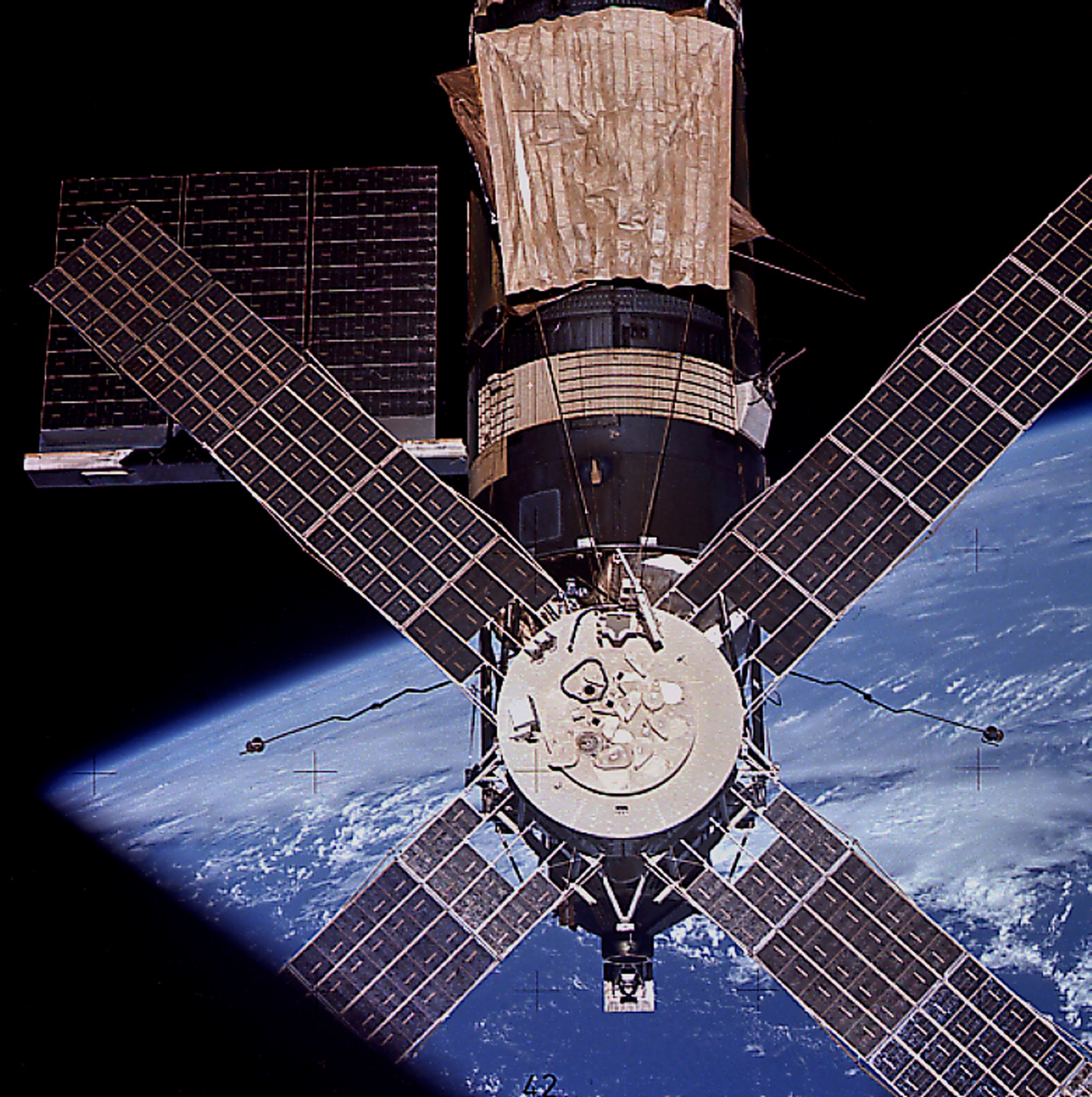
This week in 1973, the third and final crewed Skylab mission launched aboard a Saturn IB rocket from NASA’s Kennedy Space Center. The crew – astronauts Gerald Carr, William Pogue, and Ed Gibson – performed a diverse range of experiments and observed the comet Kohoutek. After 84 days in space, the crew returned to Earth on Feb. 8, 1974. Today, the Payload Operations Integration Center at NASA’s Marshall Space Flight Center serves as “science central” for the International Space Station, working 24/7, 365 days a year in support of the orbiting laboratory’s science experiments. After 20 years of continuous human presence, the space station remains the sole space-based proving ground and stepping stone toward achieving the goals of the Artemis program. The NASA History Program is responsible for generating, disseminating, and preserving NASA’s remarkable history and providing a comprehensive understanding of the institutional, cultural, social, political, economic, technological, and scientific aspects of NASA’s activities in aeronautics and space. For more pictures like this one and to connect to NASA’s history, visit the Marshall History Program’s webpage. (NASA)



























